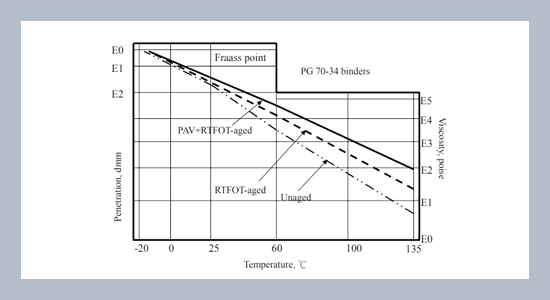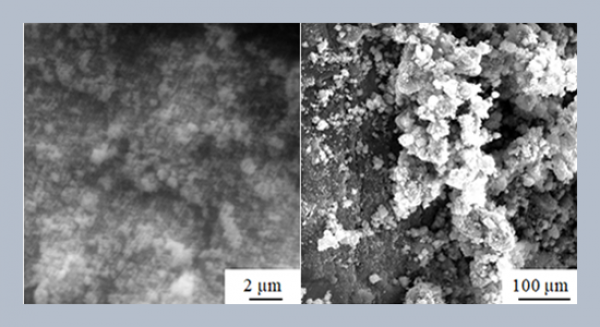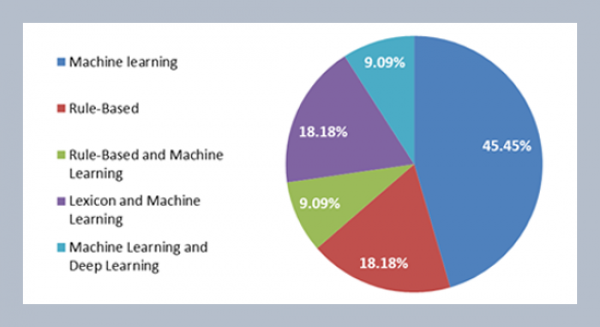Ming-Gin Leea*, Chui-Te Chiub, Yu-Cheng Kana, and Kuei-Ching Chena a Department of Construction Engineering Chaoyang University of Technology Taichung County 41349, Taiwan, R.O.C.
b Department of Civil Engineering Chung-Hua University, Hsinchu 300, Taiwan, R.O.C.
Download Citation:
|
Download PDF
This study was conducted to compare the results of SHRP and conventional binder tests on paving asphalts. The test results indicate that Brookfield viscosity shows a fairly strong correlation with G*/sinδ at high service temperature. Penetration shows a strong correlation with G*×sinδ at 25℃, and Fraass breaking point shows a moderate relationship with SHRP limiting stiffness temperature. The relationship between the creep stiffness and the failure strain at -12, -18 and -24℃ is very good (R2=0.81) as compared with the others. Creep stiffness decreases as failure strain increases. The Bitumen Test Data Chart (BTDC) basically allows one to take different physical property measurements (viscosity, penetration, Fraass temperature, and/or softening point) and predict the consistency of the material over a wide temperature range. Family curves of the BTDC could be used to compare the characteristics of a binder as it ages. A PG grade binder with a wide temperature range will display a low-temperature susceptibility in the BTDC.ABSTRACT
Keywords:
SHRP, PG grade, Fraass breaking point, BTDC.
Share this article with your colleagues
[1] Kennedy, T.W. and E.T. Harrigan. 1990. The SHRP Asphalt Research Program Product. Journal of the Association of Asphalt Paving Technologists, 59: 610-620.REFERENCES
[2] Anderson, D. A., and T. W. Kennedy. 1993. Development of SHRP Binder Specification. Journal of the Association of Asphalt Paving Technologists, 62: 481-507.
[3] Anderson, D.A. and Christensen, D.W. and H. Bahia. 1991. Physical Properties of Asphalt Cement and the Development of Performance-Related Specifications. Journal of the Association of Asphalt Paving Technologists, 60: 437-475.
[4] Bell, C. A., Sosnovske, D., and J. E. Kliewer. 1994. Relating Asphalt and Aggregate Properties and their Laboratory Aging to Field Performance of Asphalt Mixtures. Paper presented at the 73nd Annual Meeting of Transportation Research Board, Washington, C.
[5] Reese, R. 1994. Development of a Physical Property Specification for Asphalt-Rubber Binder. Journal of the Association of Asphalt Paving Technologists, 63.
[6] Bahia, H. U. and D.A. Anderson. 1995. The SHRP Binder Rheological Parameters: Why are They Required and How do They Compare to Conventional Properties. A paper presented at the 74nd Annual Meeting of Transportation Research Board, Washington, D. C.
[7] Tayebali, A., Deacon, J. Coplantz, J. and C. Monismith. 1993. Modeling Fatigue Response of Asphalt-Aggregates Mixtures. Journal of the Association of Asphalt Paving Technologists, 62.
[8] Pell, P. S. and K. E. Cooper. 1975. The Effect of Testing and Mix Variables on the Fatigue Performance of Bituminous Materials. Journal of the Association of Asphalt Paving Technologists, 44: 1-37.
[9] Anderson, D.A. and D.W. Christensen. 1992. Interpretation of Dynamic Mechanical Test Data for Paving Grade Asphalt Cements. Journal of the Association of Asphalt Paving Technologists, 61: 67-116.
[10] Chen, J. S. and C. H. Lin. 2003. Establishing Viscoelastic Model of Hot-Mix Asphalt Mixture and its Relationship to Pavement Performance. Journal of Chinese Institute of Civil and Hydraulic Engineering, 15, 1: 169-180.
[11] Tia, M. 2002. Evaluation of Superpave Mixtures with and without SBS Modification by means of Accelerated Pavement Testing. An invited paper presented at the 5th National Pavement Recycling Conference, R. O. C.
[12] Kan, Y. C. and M. G. Lee. 2002. A Study of Crumbed Scrape Tire being Applied to Concrete Construction. Journal of Chinese Institute of Civil and Hydraulic Engineering, 14, 1: 141-149.
[13] Lee, M. G. 1996. Development of Relationships Between SHRP Asphalt Test Parameters and Structural Mixtures for Mechanistic Analysis and Rehabilitation Design of Flexible Pavements. Ph.D. Dissertation, University of Florida.
[14] Yoshida, Junko. 2004. MIPS to focus on digital camera market. Technical Paper, EE Times.
ARTICLE INFORMATION
Accepted:
2004-08-11
Available Online:
2004-12-02
Lee, M.-G., Chiu, C.-T., Kan, Y.-C., Chen, K.-C. 2004. Comparison of results of SHRP and conventional binder tests on paving asphalts, International Journal of Applied Science and Engineering, 2, 245–256. https://doi.org/10.6703/IJASE.2004.2(3).256
Cite this article:















